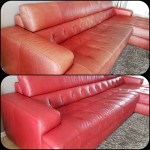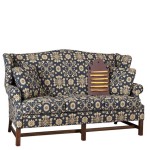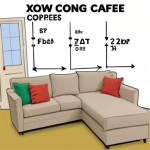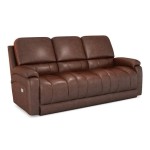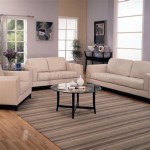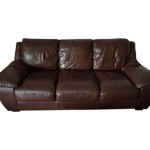How To Slipcover A Sofa
Slipcovering a sofa offers a practical and cost-effective way to update a living space, protect existing upholstery, or simply change a room's aesthetic. This process can seem daunting, but with careful preparation and a methodical approach, achieving a professional-looking result is entirely achievable.
The first step involves accurate measurement of the sofa. Specific measurements are crucial for selecting a slipcover that fits properly. Key dimensions include the width of the back, the depth of the seat, the height from the floor to the top of the back, and the length of the arms. Consulting the slipcover manufacturer's guidelines regarding measurement procedures is highly recommended. These guidelines often provide specific instructions tailored to their particular slipcover styles.
Once measurements are taken, selecting the appropriate slipcover is the next crucial step. Slipcovers are available in a wide array of fabrics, colors, and styles. Consider the existing décor of the room when making a selection. Factors such as durability, washability, and stain resistance should also influence the choice of fabric. For households with pets or children, durable and easy-to-clean fabrics are typically the most practical options.
Before putting on the slipcover, preparing the sofa is essential. This involves removing any existing cushions and thoroughly cleaning the sofa's surface. Vacuuming removes dust, crumbs, and pet hair, which can create lumps and bumps under the slipcover. Addressing any stains or spills beforehand is also important. A clean sofa ensures a smooth and even fit for the slipcover.
With the sofa prepared, the process of applying the slipcover can begin. Start by identifying the front and back of the slipcover, typically indicated by tags or labels. Orient the slipcover correctly and begin draping it over the sofa, ensuring the seams and openings align with the sofa's contours. Take time to smooth out any wrinkles or folds as the slipcover is being positioned. This prevents bunching and ensures a neat appearance.
Securing the slipcover is the next step. Most slipcovers come with ties, straps, or elastic bands designed to hold the fabric in place. Tuck these ties or straps under the sofa cushions or around the legs to create a snug fit. This prevents the slipcover from shifting or slipping during regular use. Pay close attention to areas prone to movement, such as the seat cushions and armrests.
Once the main body of the slipcover is secured, attention should be turned to the cushions. Individual cushion covers, if included, should be fitted carefully. Ensure the seams are aligned and the fabric is taut. Zippers or closures should be fastened securely to prevent the cushions from slipping out. Fluff and adjust the cushions once they are covered to achieve a comfortable and aesthetically pleasing look.
After the slipcover is fully in place, final adjustments can be made. Smooth out any remaining wrinkles or folds. Tuck in any loose fabric around the seams or edges. Check the fit around the arms, back, and seat cushions to ensure a snug and even appearance. Minor adjustments may be necessary to achieve the desired look and feel.
Maintaining the slipcover requires regular cleaning and care. Follow the manufacturer's instructions for washing or dry-cleaning the slipcover. Regular vacuuming helps prevent dust and debris from accumulating. Promptly address any spills or stains to prevent them from setting. Proper care and maintenance will prolong the life of the slipcover and keep the sofa looking fresh.
Different types of sofas may require slightly different approaches when applying a slipcover. Sectionals, for example, often require multiple slipcover pieces. T-cushion sofas may need specific tucking techniques to accommodate the cushion design. Consulting resources specific to the sofa style can provide valuable guidance and ensure a successful outcome. Online tutorials and videos can offer visual demonstrations of these techniques.
Choosing the right slipcover material is a crucial factor in achieving the desired aesthetic and functionality. Cotton and linen offer a natural, breathable option, while polyester and microfiber provide durability and stain resistance. Velvet and chenille offer a luxurious feel, while denim and canvas provide a more casual look. Considering factors like lifestyle, room décor, and maintenance requirements will help determine the most suitable material.
Addressing common slipcover challenges can further enhance the fit and appearance. For slipcovers that tend to ride up, non-slip gripper pads placed between the slipcover and the sofa can provide added stability. For loose-fitting slipcovers, strategically placed safety pins or fabric clips can create a more tailored look. Understanding these troubleshooting techniques can help address common issues and achieve a more polished result.
:max_bytes(150000):strip_icc()/9CraftingNook-499f3378b698461cb206f172f76a9286.jpg?strip=all)
20 Diy Couch Cover Ideas For Any Budget

How To Design Your Slipcover Like A Pro The Maker

Pin On Cleaning Tricks Organizing Diy

How To Make Slipcover For A Sofa Diy Couch Cover

How To Cover A Chair Or Sofa With Loose Fit Slipcover In My Own Style

Cottage Style Canvas Slipcover The Maker

How To Cover A Chair Or Sofa With Loose Fit Slipcover In My Own Style

No Sew Sofa Makeover How To Cover A With Fabric Drop Cloth Life By The Sea Couch Diy

A Secret Guide To Loose Cover Sofas Sofasofa

8 Stylish Sofa Cover Ideas To Protect Your Furniture Home Made By Carmona

